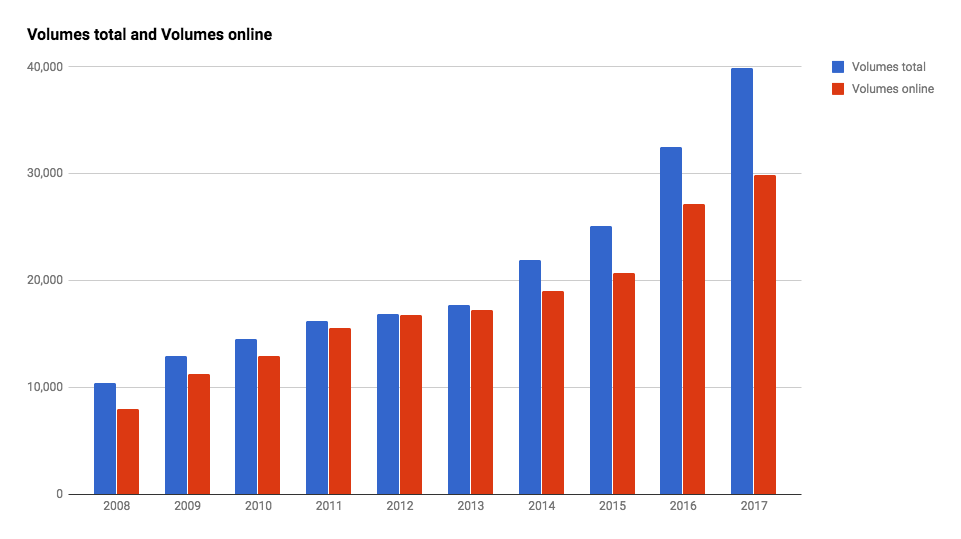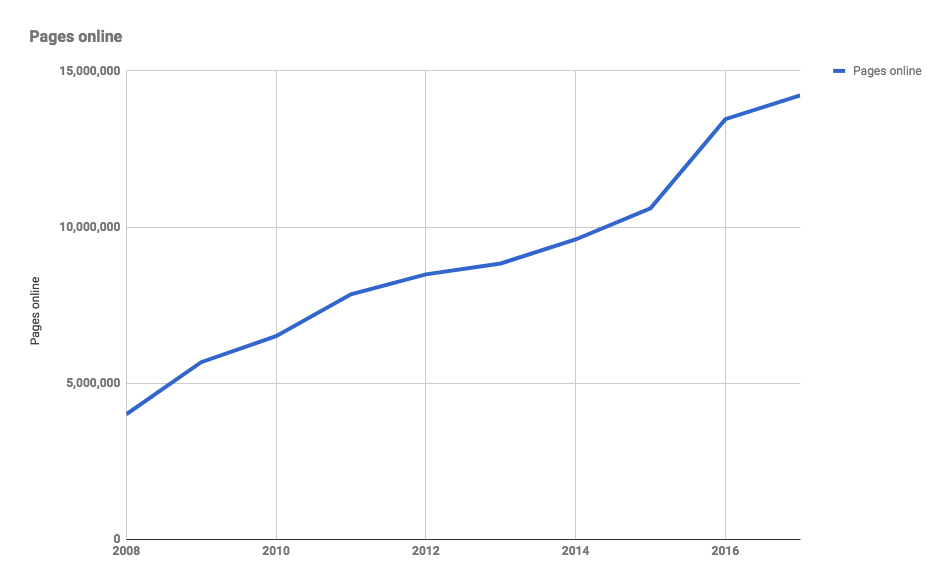It may be a new year but it's not too late to reflect on what happened in 2017. The last 12 months was a busy time for BDRC, and we reached a number of significant milestones.
Going Up!
In 2017 BDRC greatly increased the size of its archive running two major digitization projects in Asia. In fact, as reflected in the below charts, this has been a consistent trend for the past few years. Modern scanning technology makes image capture fast and cheap, meaning we can digitally preserve Buddhist literature with unprecedented efficiency. The downside is that scanning can now outpace the speed at which we're able to process images and make them available online.

Number of volumes (online and not yet)
But thanks to tireless work by BDRC staff over the past six months, we have nearly finished processing a backlog of 5.8 million images of Tibetan texts, and 14.2 million pages of Buddhist texts are now available, for free, in our online library.

Number of pages online
BDRC's Library Now Available On Your Mobile Device
Last year also saw the launch of BDRC's mobile app, providing a new way to interact with our library. In addition to expanding access for those with limited internet access, the release of a mobile app responds to trends in user behavior, especially in China where mobile device use is growing rapidly.
The app, available on the App Store and Google Play, allows users to search BDRC's library offline and then share and download texts when connected to the internet. A new feature added in a recent update also gives users the ability to download texts from a copy of BDRC's archive designed for their location. We'll continue to improve the app and add new features in the coming months!
BDRC: The Next Generation
BDRC has been hard at work building its next generation repository: the Buddhist Universal Digital Archive (BUDA). BUDA will offer a suite of research tools, a powerful search function that allows for multi-language queries across multiple repositories of Buddhist texts, and, among other tools, open image sharing and image annotation using IIIF. BUDA's features will make it the nexus in a collaborative network of Buddhist scholarship.
In 2017 we made significant progress developing BUDA's technical infrastructure and tools (if you're technically savvy, you can check out what we've been working on by visiting our open-source GitHub repositories). This means BUDA is in an excellent position to make big advances in 2018.
We're excited to find new ways to increase access to Buddhist literature and expand our already extensive archive in 2018, so be sure to sign up for our newsletter and follow us on Facebook to stay informed about all of BDRC's breaking news.
Happy New Year!





Sorry, the comment form is closed at this time.